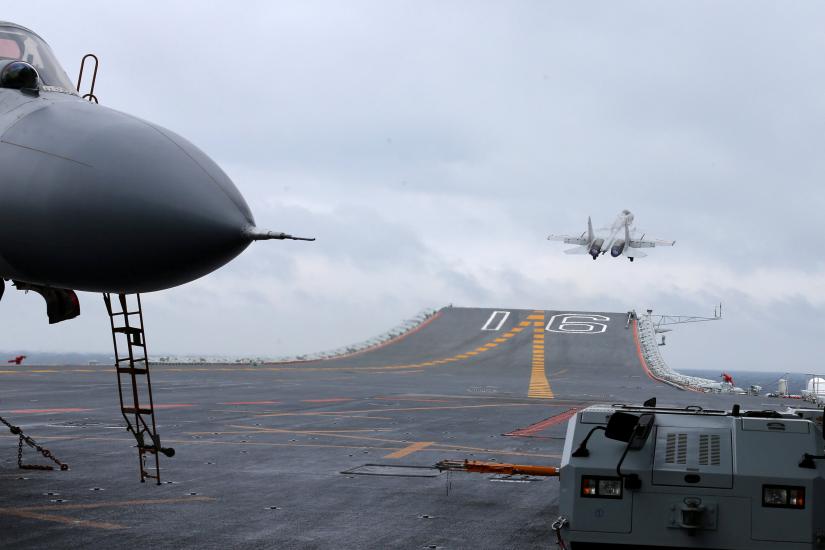 Qinzhou is the ancient point of Chinese Marine Silk Road. In this Qinzhou seaport, China has started the construction of the China-Malaysia Qinzhou Industrial Park intending to make it a role model zone of China-ASEAN cooperation. China was ASEAN’s largest external trading partner in 2017, and it received 14.1% of ASEAN exports as the EU came next at 12%, followed by the United States at 10.8%. Trade flows between ASEAN nations and China have grown sharply in recent years. During the past 10 years, between 2005-2014, trade flows between ASEAN members and China tripled. The South-East Asian region is now China’s third-largest trading partner with annual bilateral trade valued $443.6 billion.
Qinzhou is the ancient point of Chinese Marine Silk Road. In this Qinzhou seaport, China has started the construction of the China-Malaysia Qinzhou Industrial Park intending to make it a role model zone of China-ASEAN cooperation. China was ASEAN’s largest external trading partner in 2017, and it received 14.1% of ASEAN exports as the EU came next at 12%, followed by the United States at 10.8%. Trade flows between ASEAN nations and China have grown sharply in recent years. During the past 10 years, between 2005-2014, trade flows between ASEAN members and China tripled. The South-East Asian region is now China’s third-largest trading partner with annual bilateral trade valued $443.6 billion.
As China wants to increase its trade with ASEAN countries and others also, it has started building infrastructure in its land and also overseas. The China-Malaysia Qinzhou Industrial Park is a part of that infrastructure development. The primary destination of Qinzhou port is the Kuantan port of Malaysia. Malaysia is China’s third-largest trading partner in Asia. These two countries are building up that park and the Qinzhou port is not only for these two countries' trade but also they are going to start work on the Maritime Silk Road which is also China's Belt and Road Initiative.
One of the authorities of China-Malaysia Qinzhou Industrial Park said that this port will be a free port for all as they seek to revive their ancient marine line. Their present destination is ASEAN countries. But the authorities say that South Asian countries are not as developed as the ASEAN countries and they are a good market for China. Professor Wang Yuzhu, an expert of the Belt and Road Initiative (BRI) explained why South Asia is important for the BRI. Wang Yuzhu wants to enter in South Asia with the Chinese dream project BRI, but he is not aggressive with BRI project. Rather he seeks to apply soft business diplomacy. Infrastructure connectivity, resource development, economic cooperation, cultural exchange, and ecological protection will be the project priorities of the BRI. Wang Yuzhu said that some of the Chinese policymakers are very much assertive about BRI. The first pillar of his policy is stress on people to people connection with all the countries but in recent times, he focuses on South Asian countries. Besides, the BRI is to focus on developing infrastructure connectivity as it is more essential for attracting investment from the both domestic and international community. The development of many countries was delayed due to lack of investment for enhancement of connectivity. If China can establish such connectivity and cooperation, it will help decrease the price of commodities. It is another part of the soft business diplomacy of Wang Yuzhu. He urged that we must provide the product to the people always in a reasonable price. If transporting a product becomes easier, its cost will decrease.
 Can China ultimately go forward with this soft policy? The South China territorial Sea dispute has emerged as a challenge to the unity of the ASEAN nations. ASEAN has already discussed drawing up a code of conduct to be signed with China in governing disputes in the South China Sea. But Beijing is reluctant to sign a multilateral agreement. China is also worried about the South China Sea conflict and the Indo-Pacific Sea. Though the Indo-Pacific grouping Quad is in a very initial stage China has taken it seriously. Because this Quad will not only control the Indo-Pacific Sea, but it will help countries now engaged in conflict with China for the control of the South China Sea. President Trump gave many bold speeches regarding the conflict of South China Sea. But when he visited China, he did not utter a single word. The position of China and America is going to be a Thucydides Trap position. In this trap, China is a new power who is going to replace the old power, America. However, it will take at least 50 years for the new power to take shape. If we go back to past history, we find that the result of the Thucydides Trap is war. Harvard researchers say, normally the result of the war of Thucydides Trap is always in favour of the new power. But it is tough to predict the future Thucydides Trap’s result. All the past Thucydides Traps were guided by the military power. But China is emerging with more economic power than military power. So, it is totally new in the world. The future economy will not be Unipolar, rather it will be multipolar. So, the new power of the Thucydides Trap is not China, not any single country; it will be the Asian continent. In that time, Many ASEAN countries and South Asian countries, mainly India even Bangladesh will be major centres of economy. China without any concern will be a big economy. Again, China and India both have 30 percent of people who live below the poverty line now. We can surely say all Asian countries in South-East Asia, South Asia and Far East Asia have to resolve their problems, reduce conflicts and build up people to people connection to reach the goals of the new economic world. That’s why, Wang is on the right path which is soft business diplomacy, people to people connection, building infrastructure and reducing conflict with each other. Besides, it must be wise not to push on any agenda of any one country over another. It is better to win over each over.
Can China ultimately go forward with this soft policy? The South China territorial Sea dispute has emerged as a challenge to the unity of the ASEAN nations. ASEAN has already discussed drawing up a code of conduct to be signed with China in governing disputes in the South China Sea. But Beijing is reluctant to sign a multilateral agreement. China is also worried about the South China Sea conflict and the Indo-Pacific Sea. Though the Indo-Pacific grouping Quad is in a very initial stage China has taken it seriously. Because this Quad will not only control the Indo-Pacific Sea, but it will help countries now engaged in conflict with China for the control of the South China Sea. President Trump gave many bold speeches regarding the conflict of South China Sea. But when he visited China, he did not utter a single word. The position of China and America is going to be a Thucydides Trap position. In this trap, China is a new power who is going to replace the old power, America. However, it will take at least 50 years for the new power to take shape. If we go back to past history, we find that the result of the Thucydides Trap is war. Harvard researchers say, normally the result of the war of Thucydides Trap is always in favour of the new power. But it is tough to predict the future Thucydides Trap’s result. All the past Thucydides Traps were guided by the military power. But China is emerging with more economic power than military power. So, it is totally new in the world. The future economy will not be Unipolar, rather it will be multipolar. So, the new power of the Thucydides Trap is not China, not any single country; it will be the Asian continent. In that time, Many ASEAN countries and South Asian countries, mainly India even Bangladesh will be major centres of economy. China without any concern will be a big economy. Again, China and India both have 30 percent of people who live below the poverty line now. We can surely say all Asian countries in South-East Asia, South Asia and Far East Asia have to resolve their problems, reduce conflicts and build up people to people connection to reach the goals of the new economic world. That’s why, Wang is on the right path which is soft business diplomacy, people to people connection, building infrastructure and reducing conflict with each other. Besides, it must be wise not to push on any agenda of any one country over another. It is better to win over each over.
A state award-winning journalist, Swadesh Roy can be reached at [email protected].


